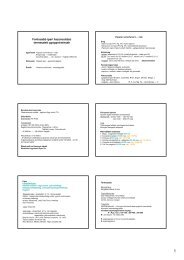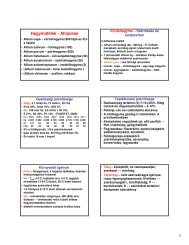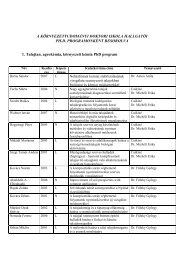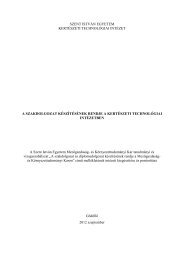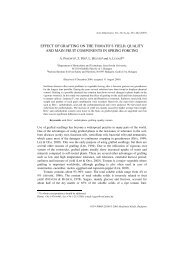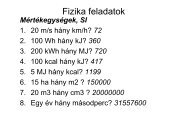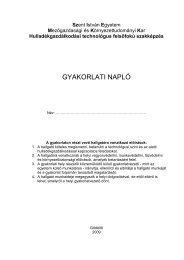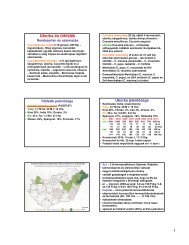PhD Fekete - SZIE version - 2.2 - Szent István Egyetem
PhD Fekete - SZIE version - 2.2 - Szent István Egyetem
PhD Fekete - SZIE version - 2.2 - Szent István Egyetem
You also want an ePaper? Increase the reach of your titles
YUMPU automatically turns print PDFs into web optimized ePapers that Google loves.
1.3. Aims of the <strong>PhD</strong> thesis<br />
Introduction<br />
In this doctoral thesis, two main questions are set as primary goals.<br />
The first question is related to a significant everyday motion, the non-standard squatting, and its<br />
kinetics.<br />
What is the difference between the standard and non-standard squatting?<br />
In case of standard squatting, the horizontal displacement of the center of gravity is neglected<br />
during the movement (it is supposed to be fixed in one point). However, this parameter is<br />
considered in the non-standard squat and its position depends on the flexion angle.<br />
So far, only the standard squat has been substantially investigated, which lacks this significant<br />
parameter. For this reason, the choice fell on the non-standard squat since the horizontal<br />
movement of the centre of gravity, or in other words the forward movement of the trunk, may<br />
considerably alter the kinetics of this type of movement. The forward-backward movement of<br />
the trunk as a factor, has been recognized and mentioned in earlier studies, but it was always<br />
left out of consideration.<br />
A new analytical-kinetical model that involves this parameter answers the question of how the<br />
forward movement of the trunk may affect the patellofemoral forces. By having involved the<br />
effect of moving center of gravity (movement of the trunk) into the model, the patellofemoral<br />
force, the tibiofemoral force, the patellar tendon force and the quadriceps force can be derived<br />
in case of standard and non-standard squatting alike.<br />
The output of this question serves more as a fundamental understanding of the knee joint, where<br />
the results can be used as initial conditions, related specifically to the loading conditions in the<br />
replacement design.<br />
The second question deals with a more practical-orientated issue, namely the sliding-rolling<br />
ratio. This ratio actually defines the relative motion between the condyles of the femur and the<br />
tibia. For this reason, it is in a close interrelation with wear and therefore it has an essential<br />
effect on the lifetime and the survivorship of the knee implants.<br />
The foregoing phenomenon has also a fundamental side. Only a limited number of studies<br />
(analytical, numerical, and experimental) have dealt comprehensively with the question of<br />
sliding-rolling, and exclusively only but one study investigated this phenomenon on both lateral<br />
and medial sides of prostheses geometries.<br />
Preliminary results have already been published, for example in the beginning of the motion up<br />
to 20-30˚ of flexion angle the relative motion is dominantly rolling, while above these angles<br />
sliding is prevailing.<br />
As for an output, this phenomenon is substantially essential in the tribological tests on actual<br />
prostheses. The presence of sliding-rolling produces different wear phenomenon on the<br />
connecting surfaces and for this reason a proper ratio has to be applied during these<br />
experiments. So far, these preliminary results were normative for tribological tests regardless of<br />
the applied domain (20-30˚ of flexion angle or above).<br />
Considering that a ratio, which is applicable for lower angles, would also be appropriate at<br />
higher angles is most certainly incorrect. For this reason, the ratio has to be investigated<br />
between 20˚ and 120˚ of flexion angle in order to provide valid results for experimental tests.<br />
The result of the second question is a multibody model, which can predict the sliding-rolling<br />
ratio of different prostheses. By the summary of these models, a general range about the ratio is<br />
appointed.<br />
– 9 –





